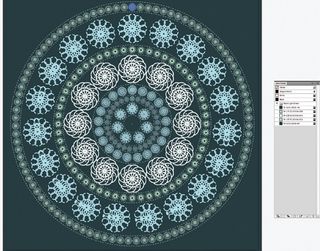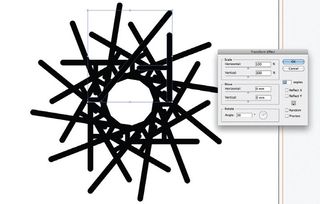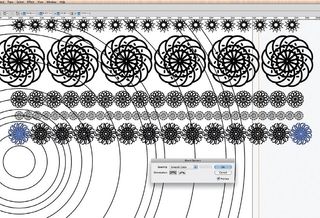Behind the scenes: Launching Sony’s PlayStation Vita games
Creative production studio Mi explains how it transformed simple 2D designs into complex 3D animations, while developing intro cinematics for PlayStation Vita’s new augmented reality games
The studio
’s managing director Anthony Hartley-Denton oversaw the entire strategic development and operations of the studio’s project for Sony. Technical director Gareth Thatcher handled the technical aspects, including pipeline development, layout, rigging, lighting and rendering, and final polish. Client liaison, art direction and creative concepts, as well as project management, was down to Mi’s production director Adam Dickinson.
The brief: PS Vita game intros
Hartley-Denton and Thatcher first incorporated Manchester-based studio Mi in 2007. Since then, the company has been working in three main areas: games, architecture, and brands and broadcast. The studio’s diversity and high quality production has won it work with a wide variety of clients, ranging from small local agencies to the likes of Sony and Activision.
Having worked with Mi previously, Sony wanted the team on board. The brief was to create intro cinematics for a suite of Sony’s augmented reality games, which would be bundled into the launch package of its latest handheld games console. Mi accepted the offer despite an incredibly tight five-week deadline. Operating with a skilled team and a super-efficient pipeline, the studio, in collaboration with Sony, first created many 2D concepts for the three different games, before transforming them into dynamic 3D animations. Dickinson begins the story…

"We first heard about the PS Vita project when an executive producer at Sony, Pete Smith, rang us to ask if we would like to do the intro pieces. We’d done concept work in a similar area for Sony before, so we didn’t have to pitch for it. They knew we understood the medium, what the exposition of the augmented reality games needed to explain, and trusted us to deliver. We jumped at the chance – even on a daunting timeframe.
"The brief was to create cinematic intros that were meant to be exposition pieces and scene-setters that would lead straight into Sony’s suite of augmented reality games for the new Vita console. There are three games – Cliff Diving, Fireworks and Table Football – and each had an individual brief, because they differ quite considerably. However, they all had one aim: to get the transition of real world and augmented reality across in an engaging and entertaining manner. Sony wanted these games to bring their production values right up there to compete with the launch line-up of big name titles.
"We had a lot of free rein in the cinematics design but, of course, there were key messages to get across. I would say many things had an influence on the concepts for each animation. Diver Dan, who features in the Cliff Diving game, was inspired by Mr Magoo and Johnny Bravo. The Sky Sports Table Football skit was influenced by Monty Python and English comedians Vic and Bob. The Firework sequence drew upon a little bit of The Beverly Hillbillies. And, of course, Pixar’s short film Red’s Dream for the classic idea of putting personality into inanimate objects. I think that everything Pixar does influences everyone in CGI.
"We were very lucky that our experience led us to come to creative solutions that Sony loved very quickly, but the whole project was a very collaborative process. We had very frank and vital discussions with all the producers and senior producers at Sony and had consultations daily. This way, we got stages signed off with rounds of amends constantly. There’s no way we would have achieved the deadline without those guys’ feedback and rapid sign-off at the right stages."
Get the Creative Bloq Newsletter
Daily design news, reviews, how-tos and more, as picked by the editors.
Technical director Gareth Thatcher on production…
"After the meetings with Sony to chat through some initial ideas, we then drew up the storyboards back at Mi and planned our approach to each intro. The next stage was to model and texture the environments, for which we referenced geometry into master files, enabling multiple artists to work on the same scenes.

"We used Maya and V-Ray for the Cliff Diving and Table Football animations, and 3ds Max, V-Ray and fluid dynamics engine FumeFX for Fireworks. We have both Maya and 3ds Max artists working in the studio, so we can swap which software we use, depending on the job and which artists are available.
"On the technical side, evolving our character pipeline between 3ds Max and Maya was quite an interesting development. We tend to work the other way around, taking animation from Maya to render in 3ds Max and V-Ray. But the mo-cap footballers and crowd geometry were all in 3ds Max format, so we used a script to export the geometry and record cache files to read back in Maya and render in V-Ray from there.

"To get this project completed on time, we had to work on multiple things at once. For example, while dealing with the environments, we were also underway with the first pass animations for each character. We needed to get animatics and iterations back to Sony quickly due to the tight deadlines. Once these and the layouts were approved, we then refined the animations, applied the lighting, depth of field effects and final colour corrections. All the while, London-based creative sound design company Zelig Sound was busy working on the music and sound effects.
"We collaborated with other game developers on the project too, including Spiral House, Exient and Four Door Lemon. The Diver Dan model was created by Spiral House in Liverpool, which we then took, and increased the resolution of the geometry and textures. We were surprised at how far all of these guys let us take artistic licence with all their great IP and base models. Without that trust and freedom, we would have been boxed into much more conventional intro pieces.(/p>

"Other than the tight deadlines we were working to, the most challenging aspect of the project was found in the intro. We had to start the house animations without any houses. We weren’t going to be receiving the models until a later date, and we really needed to push ahead with the animation due to the already tight schedule. We came up with a rig solution that drove a series of controls, which would in turn deform any geometry within them. When we received the final house models we replaced the proxy geometry, tweaked the animation and still had time to spare. In fact, everything came together for final output for the Vita with some time left over for tweaks.
"Since finishing the Vita project, we have also been able to complete work on another augmented reality intro for release later this year, and are now registered as Vita and iOS developers. We’re about to release our first iPhone and iPad game, so we hope this will be the start of a fantastic journey into the gaming world."

Thank you for reading 5 articles this month* Join now for unlimited access
Enjoy your first month for just £1 / $1 / €1
*Read 5 free articles per month without a subscription

Join now for unlimited access
Try first month for just £1 / $1 / €1
The Creative Bloq team is made up of a group of design fans, and has changed and evolved since Creative Bloq began back in 2012. The current website team consists of eight full-time members of staff: Editor Georgia Coggan, Deputy Editor Rosie Hilder, Ecommerce Editor Beren Neale, Senior News Editor Daniel Piper, Editor, Digital Art and 3D Ian Dean, Tech Reviews Editor Erlingur Einarsson and Ecommerce Writer Beth Nicholls and Staff Writer Natalie Fear, as well as a roster of freelancers from around the world. The 3D World and ImagineFX magazine teams also pitch in, ensuring that content from 3D World and ImagineFX is represented on Creative Bloq.
